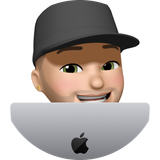Beyond the Mean: Encouraging Risk-Taking in Education and Health Professions
This post explores a human-centered approach to designing a path to health professions. Discover the importance of new ways of thinking, building self-efficacy, and the power of role models.

When your ideas don't align with the norm
As an adult, it's fascinating how certain traits from childhood persist in our lives. For instance, I still get stuck at the starting point of an idea. Growing up, I often wanted to build something - to carve a statue, build a tree fort, paint, or craft. I'd gather my supplies but get stuck at the starting point and not know how to proceed. I even took apart a bike to rebuild and re-polish it, only to let it sit there, taken apart. I've learned to push through it, to move forward before feeling 100% ready, and to have a bias toward action. However, that initial hesitation is still present.
As I approached the end of high school, I didn't know where I was headed. Stuck at the entrance. Or maybe the exit? Fortunately, I had developed a knack for doing what felt good, which allowed me to enter college and broaden my worldview. Looking back, I didn't have that force around me to say, "Yeah, do that." I didn't fit the typical mold. Nor did I have the grounding example around me of someone who was "doing that." Nothing seems possible if you don't have that person in your orbit who shows you it's possible.
So much of where we get in life is about someone directly or indirectly putting their hand on your shoulder and saying; here is where you can go. Take the next turn, and you'll be on your way.
If you are not presented with options, you may not know what you do not know. The traditional education system usually teaches students to take fewer risks to strive for the mean. When faced with life-changing decisions, people tend to choose what is familiar. They may choose to stay in the same town where they graduated high school, work in the same job as their parent(s), or pursue a career similar to what they grew up around. This is safer than starting a business or following a new career path.
What Comes Around
I am currently working with a local high school to develop a partnership between the school and the hospital where I work. The high school has already built an incredible program for students interested in health professions to explore biomedical innovation and related concepts in health. Imagine a course in your senior year of high school that is entirely based on problem-based learning, exploring questions related to health, science, medical research, medical innovation, public health, and design.
The most exciting part about what we're building is that it's a student-centered design approach toward developing a course in biomedical innovation, teaching human-centered design. Putting the students at the center allows them to be both the learners and the experts. It's a process of allowing prototyping and learning through failure.
I want to show how we can solve the complex challenges we face in health care by introducing problem-solving through the lens of sneaker design. Or 3D printing. Or creating YouTube videos. We must explore wild ideas to find solutions to the challenges we're dealing with in health care. The further upstream we can start in inspiring and building capacity among the next generation, the more likely we will arrive somewhere valuable for the future.
To create value, I solve problems I have personally faced with the hope of helping others avoid similar issues in the future. This program is my effort to expand the possibilities available to students. As an academic physician at a major teaching hospital, I have an incredible opportunity to discover opportunities for the next generation.
You need to show your work to the world because someone, somewhere, will see it and realize that doing a specific thing is possible.
On the power of role models
The beautiful thing about guidance is that it can come from anyone. Information is becoming increasingly decentralized, and mentorship at a distance is easier than ever. People can find role models worldwide doing what interests them and sharing it for others to discover. You need to show your work to the world because someone, somewhere, will see it and realize that doing a specific thing is possible. They'll see that someone who thinks like they do is doing what they're interested in, and they'll know that it's possible. Move past the fear and be generous in documenting your experiences.
I'm excited to continue to capture and share the work we're doing. I'm continuing to evolve my approach in sharing my work and want to strive to be a documentarian - to work through the hesitation in starting and instead continue to be biased toward action. To approach everything as a design challenge and use every artifact I share as an opportunity for feedback to inform the next design cycle.





